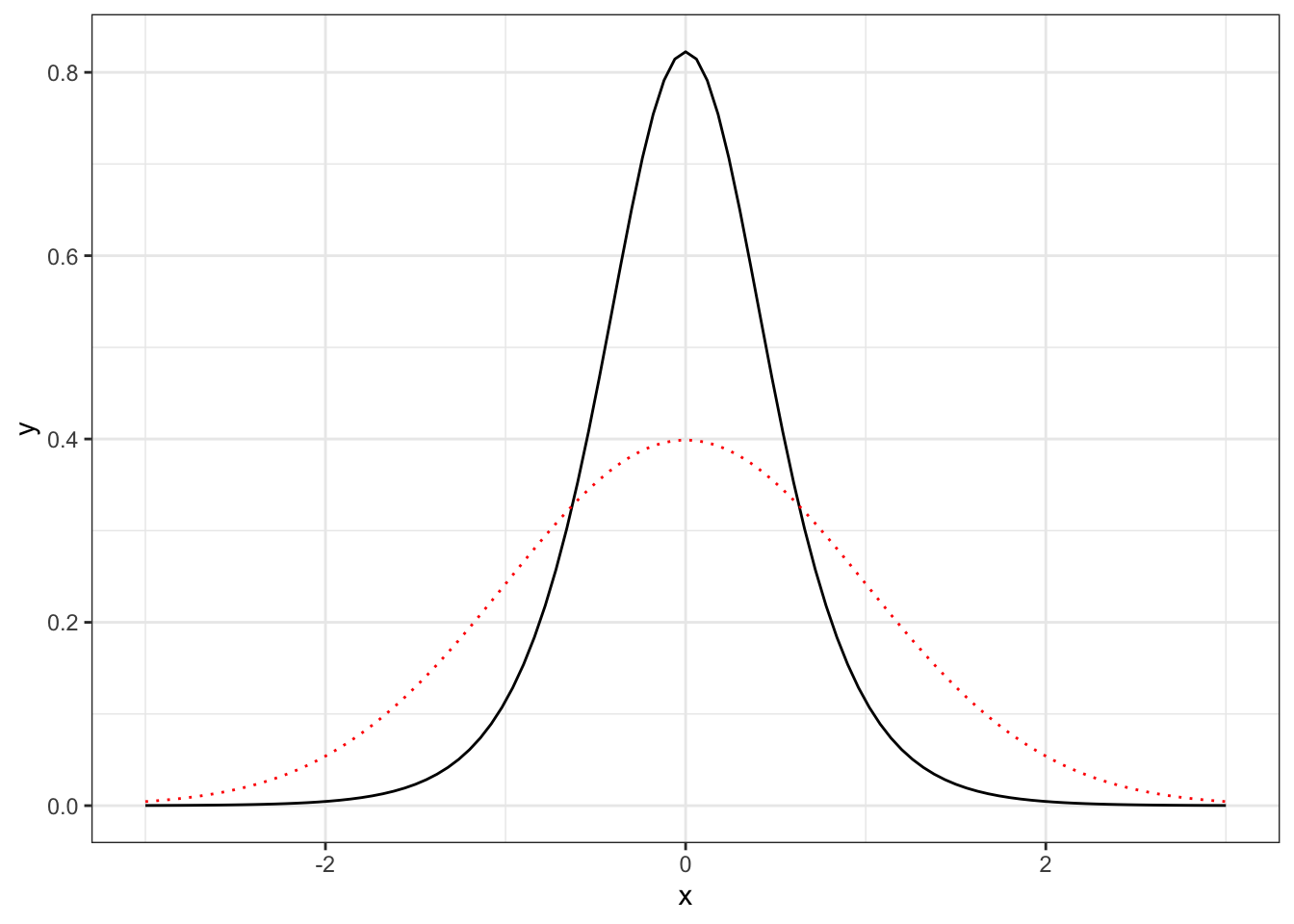library("ggplot2"); theme_set(theme_bw())2 Distributions
2.1 Discrete
2.1.1 Bernoulli
2.1.2 Binomial
2.1.3 Poisson
2.1.4 Negative binomial
2.2 Continuous
2.2.1 Normal
2.2.2 Logistic
We say a random variable \(X\) has a logistic distribution if it has the following probability density function. \[f(x) = \frac{e^{-(x-\mu)/\sigma}}{\sigma\left(1 + e^{-(x-\mu)/\sigma} \right)^2}\] with
- location parameter \(\mu\),
- scale parameter \(\sigma > 0\), and
- \(-\infty < x < \infty\).
We write \(X \sim Lo(\mu,\sigma)\) and \(E[X] = \mu\) and \(Var[X] = \sigma^2 \pi^2 / 3\).
As can be seen in the plot below, the logistic distribution has much heavier tails than the normal distribution.
# Compare logistic and normal pdfs (same mean/variance)
ggplot(data.frame(x = c(-3, 3)),
aes(x = x)) +
stat_function(fun = dlogis, args = list(scale = 3 / pi^2)) +
stat_function(fun = dnorm, color = "red", linetype = "dotted") 
The logistic distribution gets is name from its cumulative distribution function which is a member of the logistic functions.
\[F(x) = \frac{1}{1 + e^{-(x-\mu)/\sigma}}\]
The logistic distribution can be utilized in a latent variable representation of logistic regression.